Abstract
When relapse occurs following successful treatment to reduce problem behavior, it is often attributed to inconsistent implementation of maintenance programs. Although less likely, another potential cause for relapse is a change in the behavior's maintaining contingency over time. To examine this possibility, additional assessment was conducted with 4 individuals who were rereferred to a day-treatment program due to recurrence of their self-injurious behavior (SIB) 2 months to 2 years following successful treatment. In each case, the original treatment had been developed and implemented based on the outcome of functional analysis assessments. For 1 subject, results of a second functional analysis were consistent with those from the original assessment, indicating that the function of her SIB had remained unchanged. For the other 3 subjects, results of the second assessment suggested that their SIB had acquired new or additional functions. These findings indicate that factors other than program inconsistency can lead to relapse, and that clinical reevaluation for such cases should include a current functional analysis to determine if new treatment components are needed.
Full text
PDF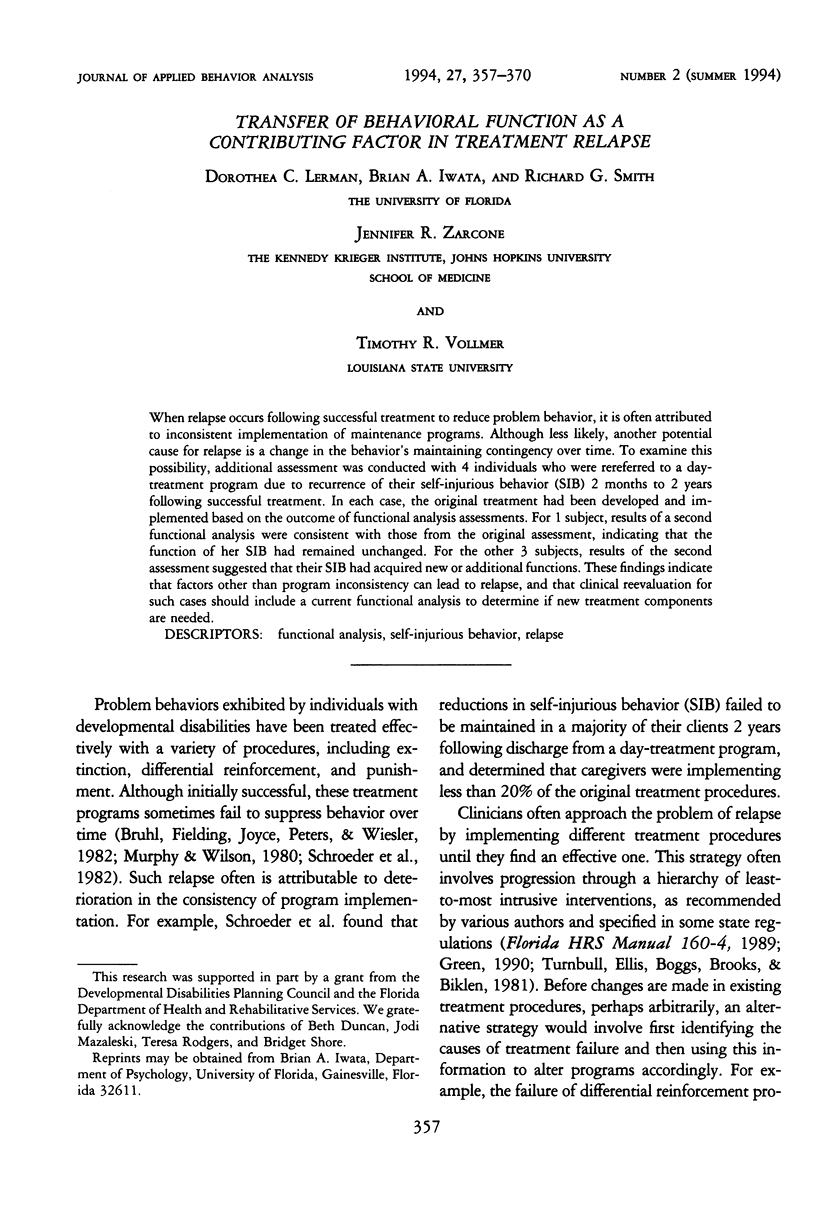
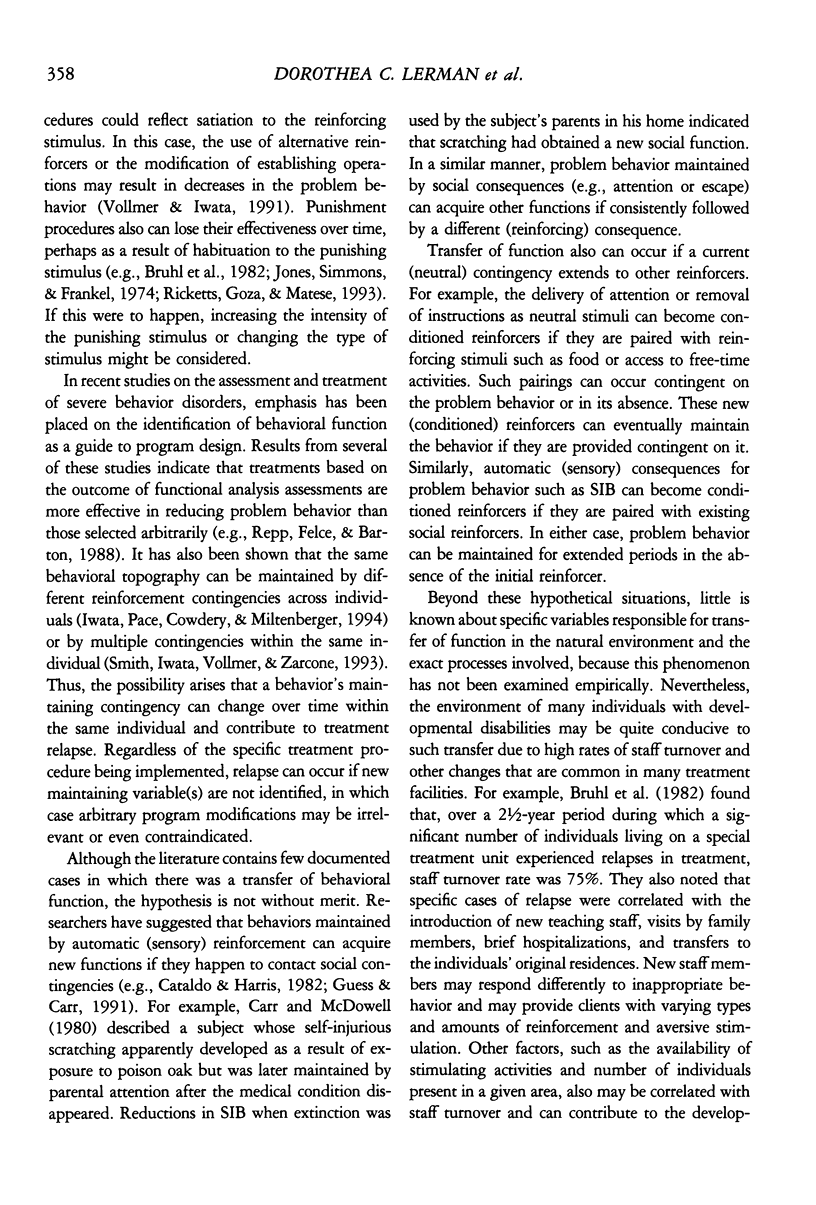
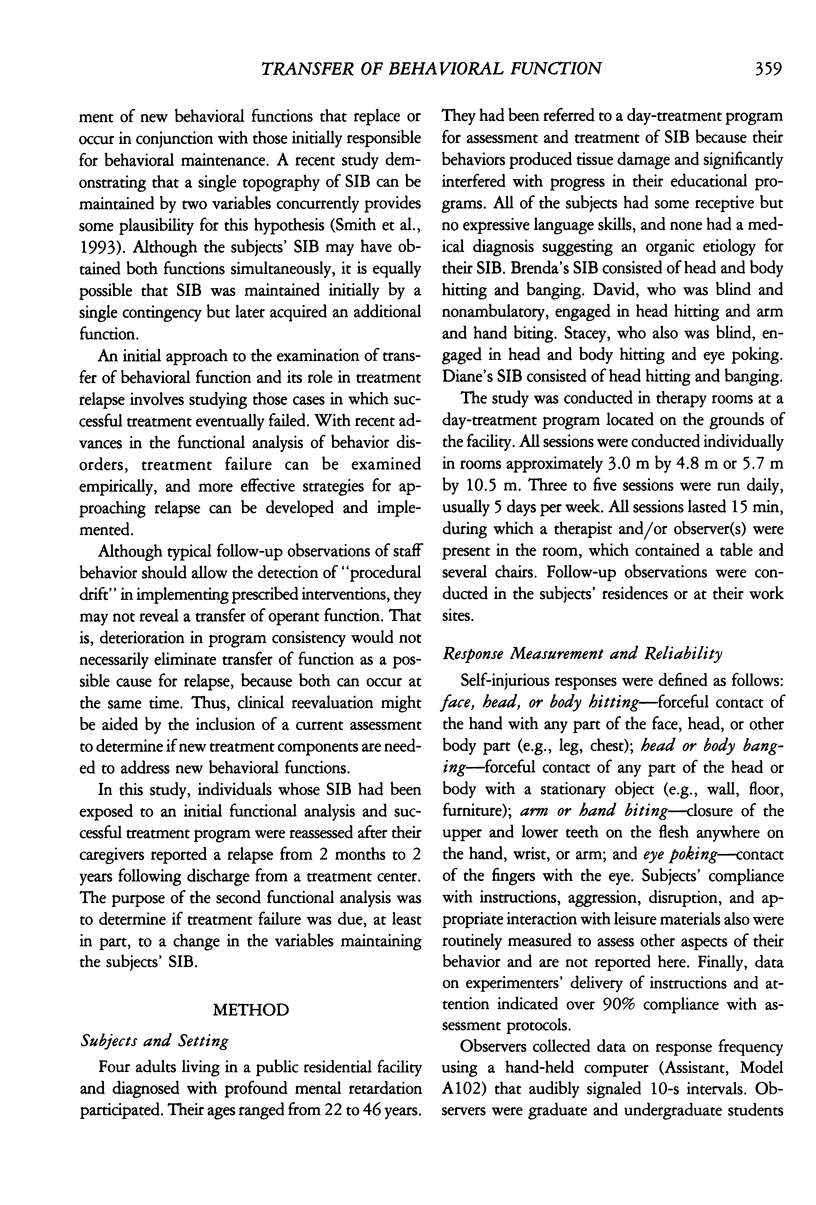
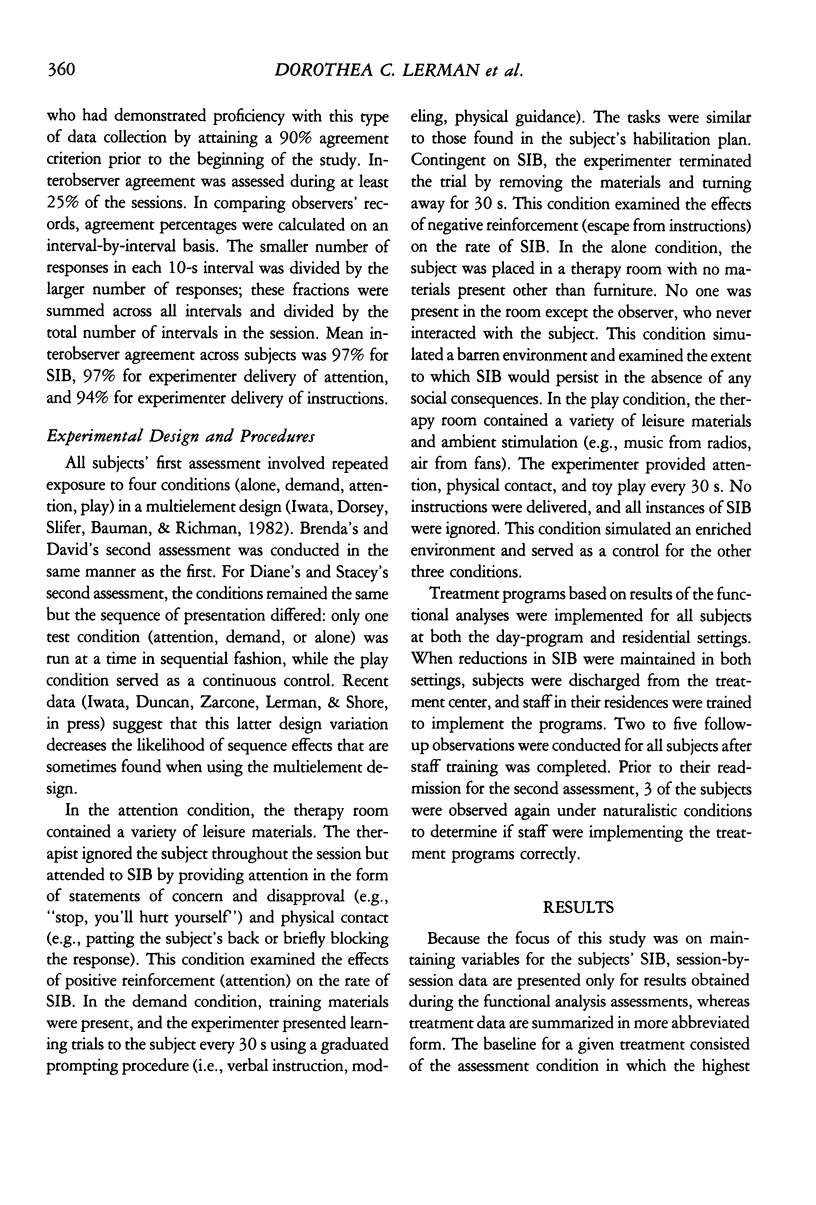
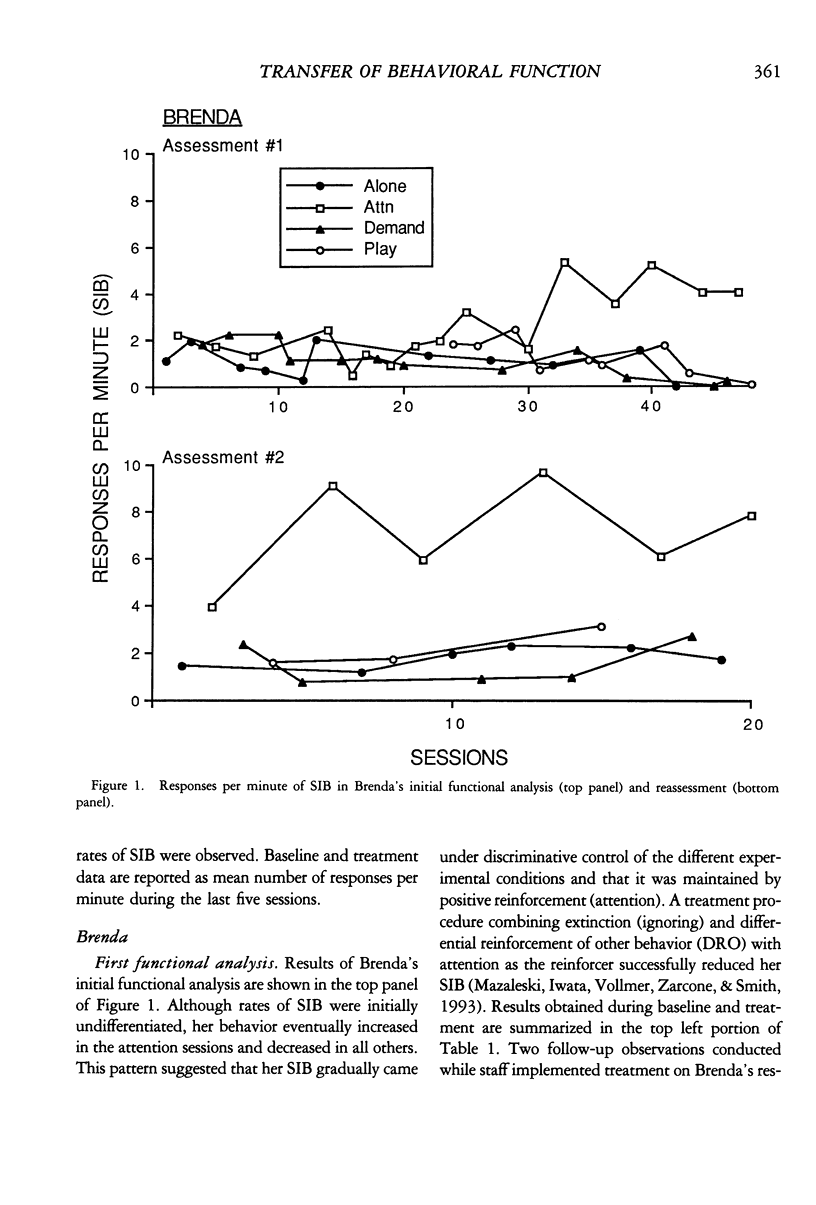
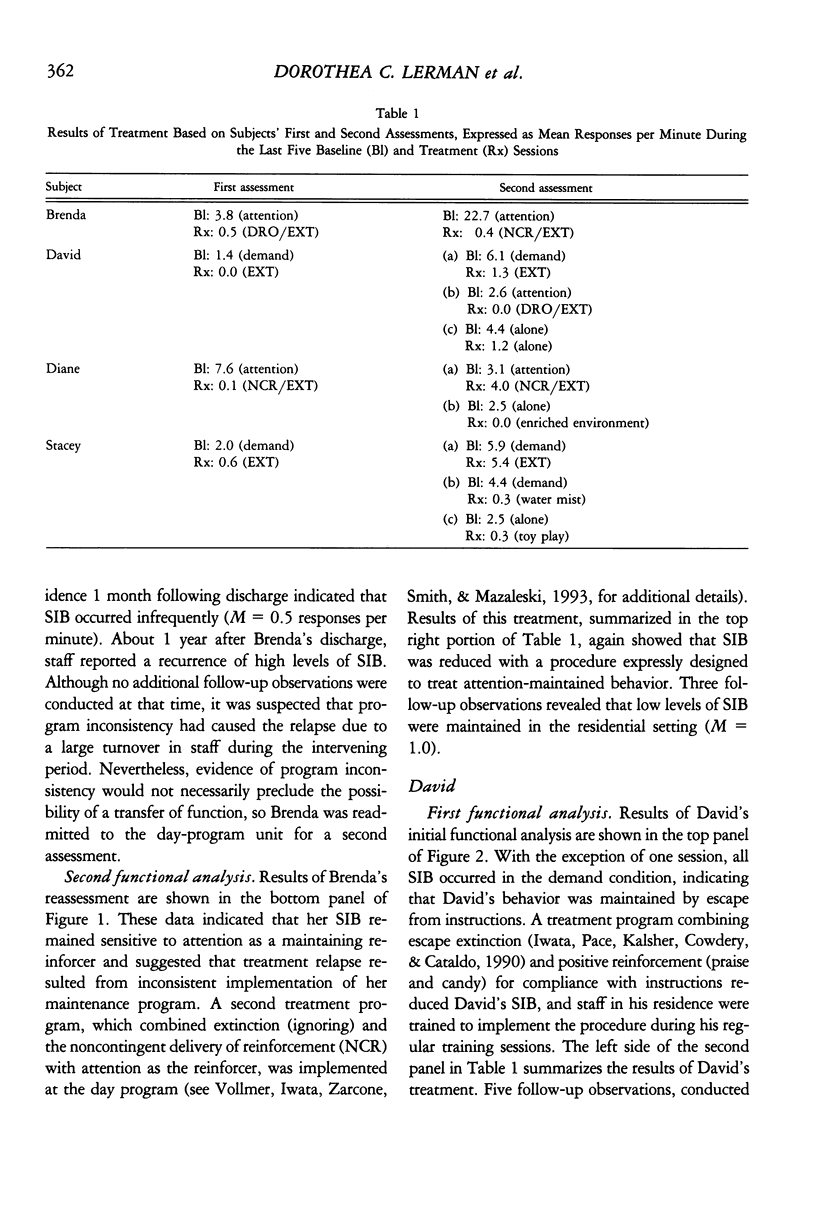
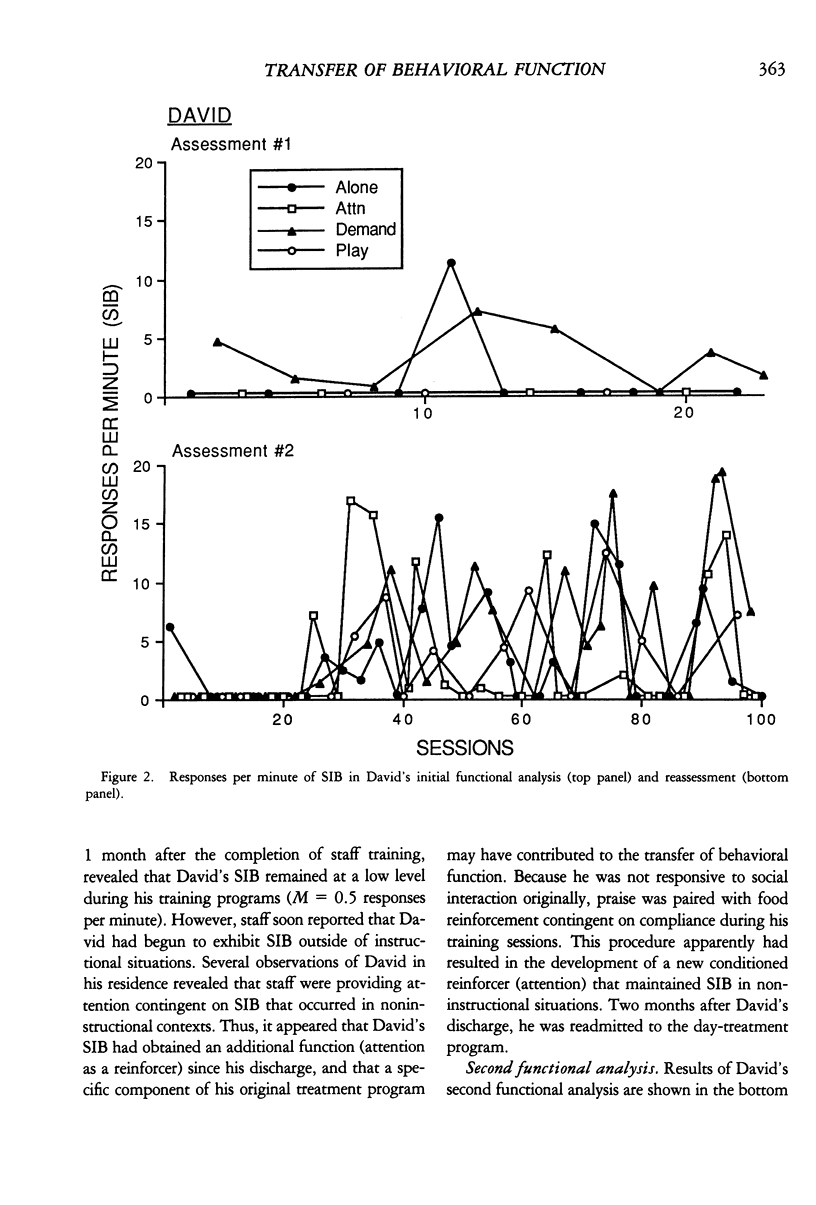
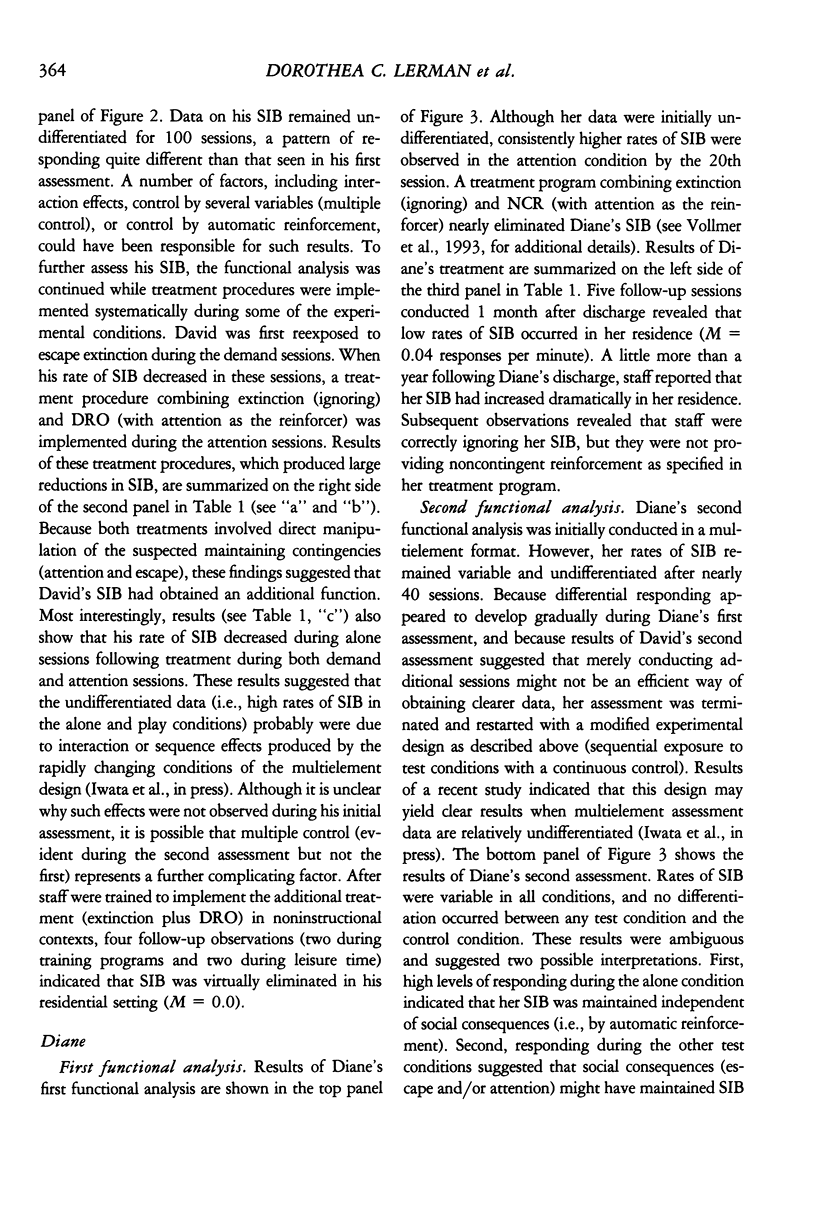
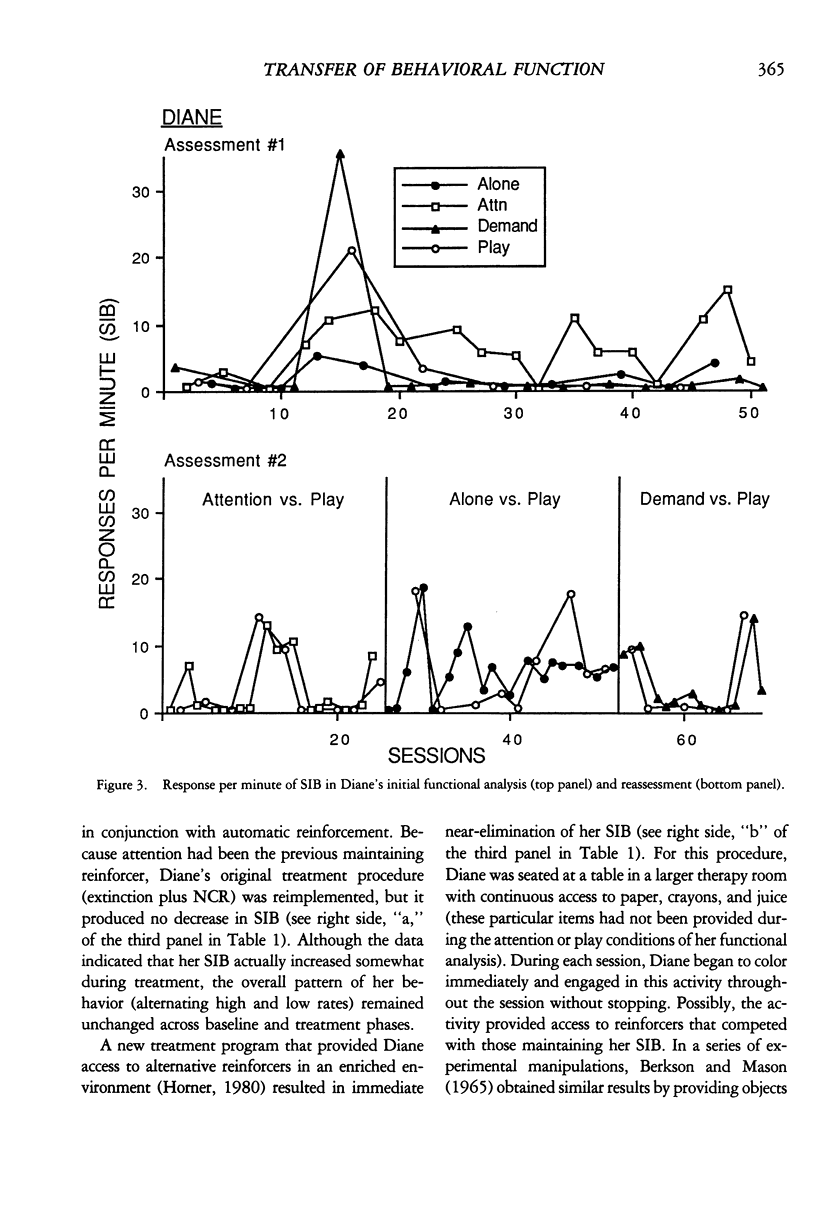
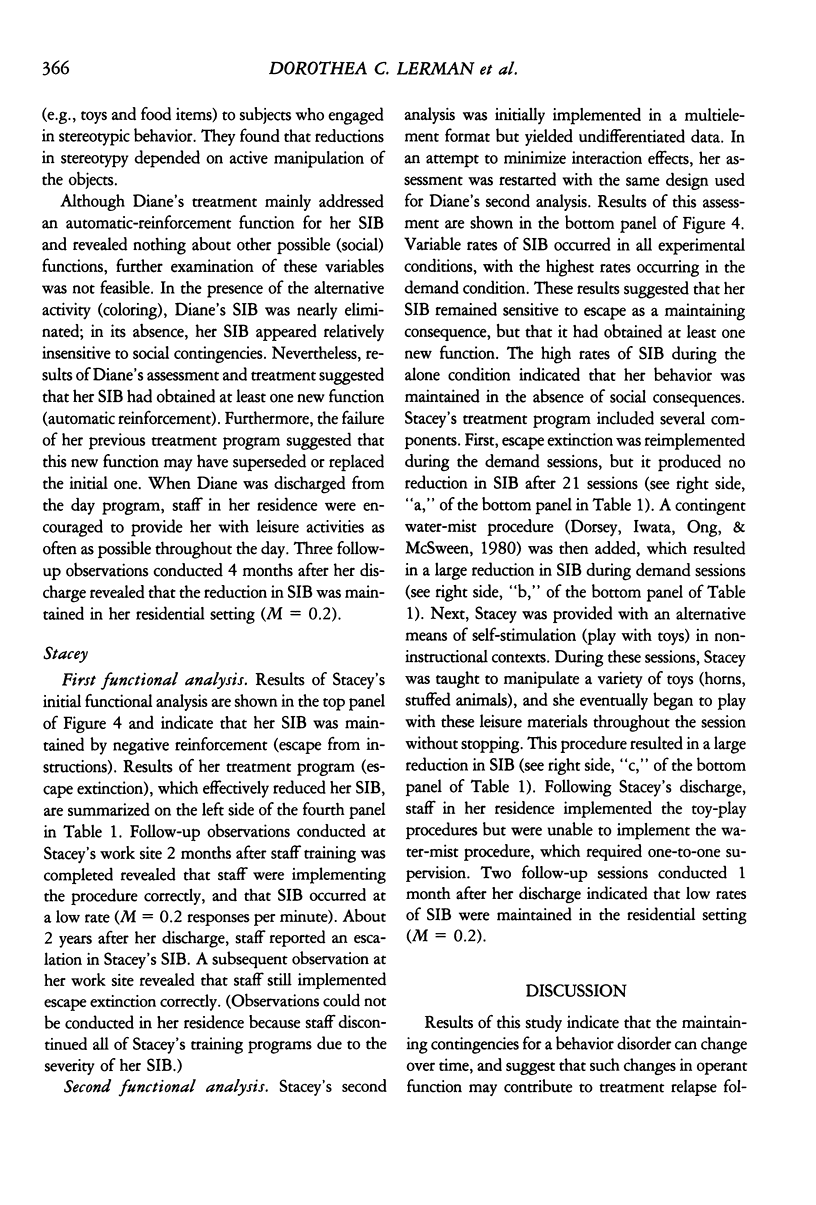
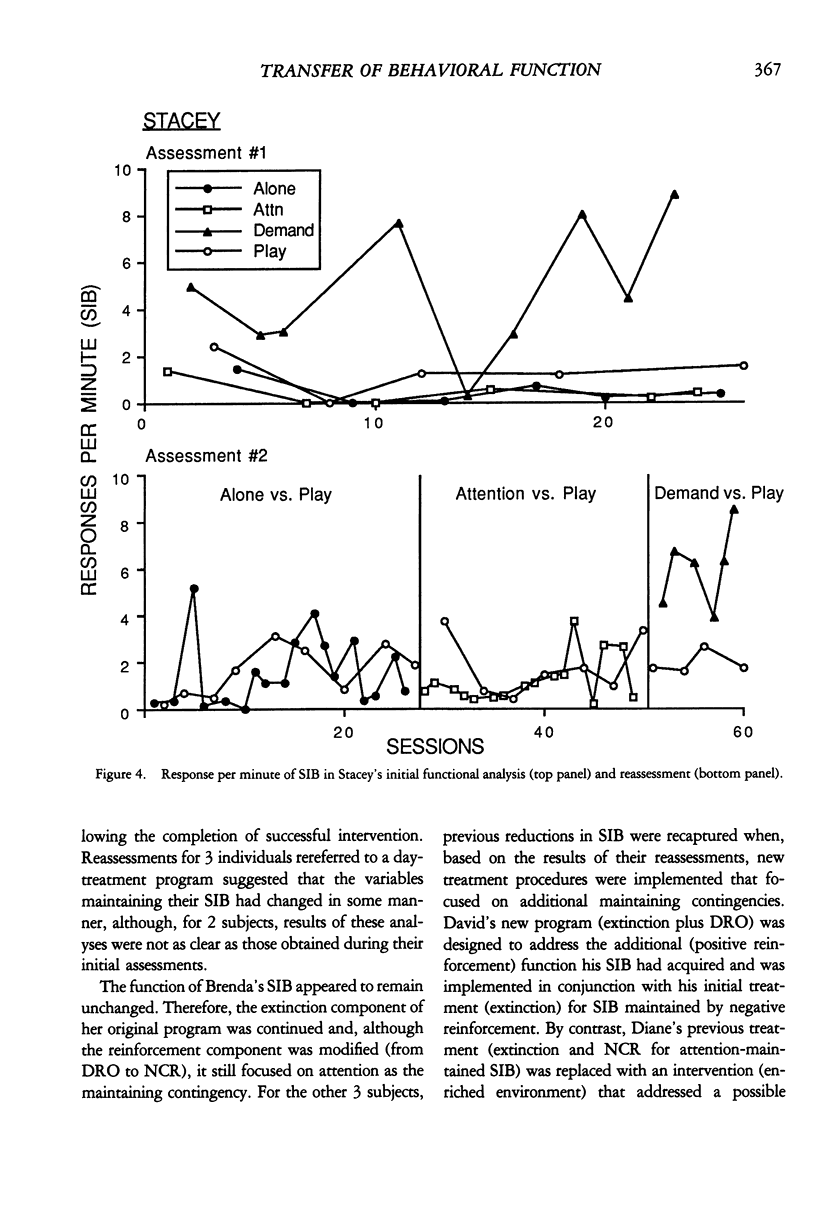
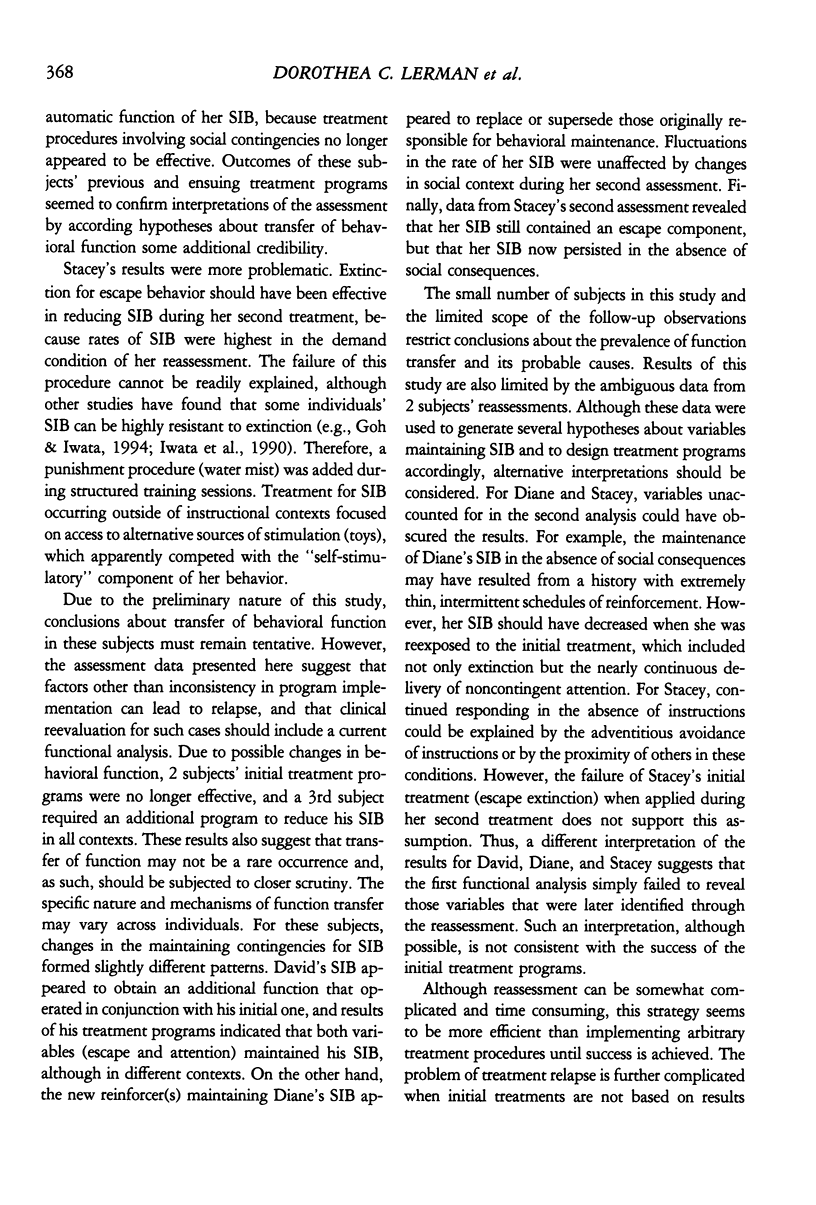
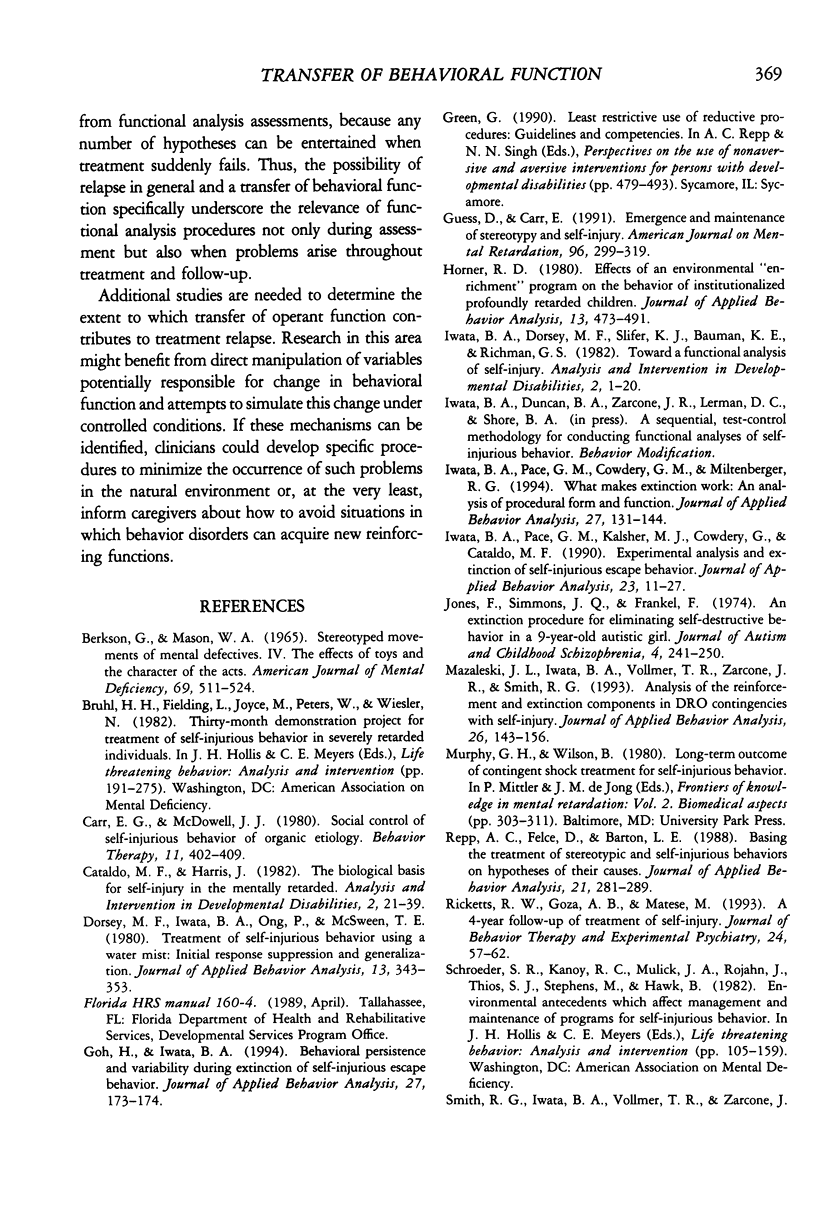

Selected References
These references are in PubMed. This may not be the complete list of references from this article.
- Bruhl H. H., Fielding L., Joyce M., Peters W., Wieseler N. Thirty-month demonstration project for treatment of self-injurious behavior in severely retarded individuals. Monogr Am Assoc Ment Defic. 1982;(5):191–275. [PubMed] [Google Scholar]
- Dorsey M. F., Iwata B. A., Ong P., McSween T. E. Treatment of self-injurious behavior using a water mist: initial response suppression and generalization. J Appl Behav Anal. 1980 Summer;13(2):343–353. doi: 10.1901/jaba.1980.13-343. [DOI] [PMC free article] [PubMed] [Google Scholar]
- Goh H. L., Iwata B. A. Behavioral persistence and variability during extinction of self-injury maintained by escape. J Appl Behav Anal. 1994 Spring;27(1):173–174. doi: 10.1901/jaba.1994.27-173. [DOI] [PMC free article] [PubMed] [Google Scholar]
- Guess D., Carr E. Emergence and maintenance of stereotypy and self-injury. Am J Ment Retard. 1991 Nov;96(3):299–344. [PubMed] [Google Scholar]
- Horner R. D. The effects of an environmental "enrichment" program on the behavior of institutionalized profoundly retarded children. J Appl Behav Anal. 1980 Fall;13(3):473–491. doi: 10.1901/jaba.1980.13-473. [DOI] [PMC free article] [PubMed] [Google Scholar]
- Iwata B. A., Pace G. M., Cowdery G. E., Miltenberger R. G. What makes extinction work: an analysis of procedural form and function. J Appl Behav Anal. 1994 Spring;27(1):131–144. doi: 10.1901/jaba.1994.27-131. [DOI] [PMC free article] [PubMed] [Google Scholar]
- Iwata B. A., Pace G. M., Kalsher M. J., Cowdery G. E., Cataldo M. F. Experimental analysis and extinction of self-injurious escape behavior. J Appl Behav Anal. 1990 Spring;23(1):11–27. doi: 10.1901/jaba.1990.23-11. [DOI] [PMC free article] [PubMed] [Google Scholar]
- Jones F. H. An extinction procedure for eliminating self-destructive behavior in a 9-year-old autistic girl. J Autism Child Schizophr. 1974 Sep;4(3):241–250. doi: 10.1007/BF02115230. [DOI] [PubMed] [Google Scholar]
- Mazaleski J. L., Iwata B. A., Vollmer T. R., Zarcone J. R., Smith R. G. Analysis of the reinforcement and extinction components in DRO contingencies with self-injury. J Appl Behav Anal. 1993 Summer;26(2):143–156. doi: 10.1901/jaba.1993.26-143. [DOI] [PMC free article] [PubMed] [Google Scholar]
- Repp A. C., Felce D., Barton L. E. Basing the treatment of stereotypic and self-injurious behaviors on hypotheses of their causes. J Appl Behav Anal. 1988 Fall;21(3):281–289. doi: 10.1901/jaba.1988.21-281. [DOI] [PMC free article] [PubMed] [Google Scholar]
- Ricketts R. W., Goza A. B., Matese M. A 4-year follow-up of treatment of self-injury. J Behav Ther Exp Psychiatry. 1993 Mar;24(1):57–62. doi: 10.1016/0005-7916(93)90009-l. [DOI] [PubMed] [Google Scholar]
- Schroeder S. R., Kanoy R. C., Mulick J. A., Rojahn J., Thios S. J., Stephens M., Hawk B. Environmental antecedents which affect management and maintenance of programs for self-injurious behavior. Monogr Am Assoc Ment Defic. 1982;(5):105–159. [PubMed] [Google Scholar]
- Vollmer T. R., Iwata B. A. Establishing operations and reinforcement effects. J Appl Behav Anal. 1991 Summer;24(2):279–291. doi: 10.1901/jaba.1991.24-279. [DOI] [PMC free article] [PubMed] [Google Scholar]
- Vollmer T. R., Iwata B. A., Zarcone J. R., Smith R. G., Mazaleski J. L. The role of attention in the treatment of attention-maintained self-injurious behavior: noncontingent reinforcement and differential reinforcement of other behavior. J Appl Behav Anal. 1993 Spring;26(1):9–21. doi: 10.1901/jaba.1993.26-9. [DOI] [PMC free article] [PubMed] [Google Scholar]


